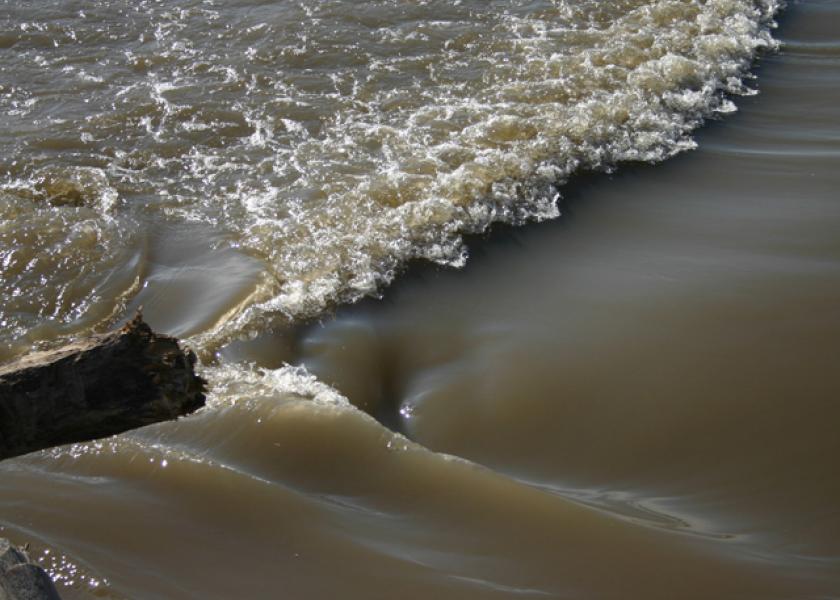Largest Recorded "Dead Zone" calls for Nutrient Loss Reduction

The Gulf of Mexico’s hypoxia zone, the “dead zone,” is 3% larger than ever before at 8,776 square miles. That’s about the size of New Jersey, according to the National Oceanic and Atmospheric Administration (NOAA). Excess nutrients leeching out of agricultural and residential soils are the primary cause of hypoxia.
“We expected one of the largest zones ever recorded because the Mississippi River discharge levels, and the May data indicated a high delivery of nutrients during this critical month which stimulates the mid-summer dead zone,” said Nancy Rabalais, Ph.D., research professor at LSU and LUMCON, who led the survey mission.
Nutrients such as nitrogen and phosphorus stimulate algal growth that decomposes and thereby uses up oxygen that supports plant and animal life underwater. It can force fish to move to other areas, decrease their reproductive ability and make shrimp smaller.
The Mississippi River is the primary culprit of nutrient loading from nearby agricultural production and is why states around the river have created a task force to combat the issue. The Mississippi River/Gulf of Mexico Watershed Nutrient Task Force was created to reduce hypoxia in the northern Gulf of Mexico and improve water quality in the Mississippi River Basin after states submitted an assessment to EPA showing the gulf needed improvement.
The task force created the Gulf Hypoxia Action Plan with a goal of decreasing the dead zone to about 2,000 sq. miles of hypoxic water by 2015. However, at the end of 2015, the dead zone was almost 6,000 sq. miles (about the size of Connecticut), and the goal was pushed to 2035.
“Over time, the task force developed goals, and states were eventually required to create nutrient-reduction strategies,” says Tim Joice, water policy director at the Kentucky Waterways Alliance, a nonprofit that advocates for water quality in a previous interview.
Currently 12 states—Arkansas, Illinois, Indiana, Iowa, Kentucky, Louisiana, Minnesota, Mississippi, Missouri, Ohio, Tennessee and Wisconsin—have or are finalizing plans, many of which affect those in agriculture.
State nutrient strategies provide options and incentives to help reduce nonpoint-source pollution (such as agricultural fields) by lowering nutrient runoff, primarily nitrogen and phosphorus, into watersheds.
“Strategies for agricultural phosphorus-loss reduction statewide include reduce soil erosion from cropland, increase living cover on land in agricultural production and emphasize nutrient use efficiencies,” says Wayne P. Anderson of the Minnesota Pollution Control Agency. “For nitrogen-loss reduction in agriculture, we emphasize the four ‘Rs’: right timing, right rate, right source and right placement.”
For now, many states along the Mississippi River have voluntary plans, but that could be at risk if the dead zone continues to grow. Taking advantage of free and incentivized programs now could help ensure regulations don’t come in the near future.
“It should be viewed as an opportunity to show how progressive and innovative the agricultural community has been and continues to be,” Clark says. “It should be viewed as a way to demonstrate more mandatory or regulatory approaches are unnecessary to achieve continued improvement in soil and water conservation.”
Take the time to research your state’s nutrient reduction strategies and consider trying a few practices on a few acres next season.







